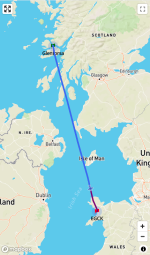My totalizer has proven really accurate and reliable, (I don’t have the red one, I have the ft42 I think it’s called) but I also reference my gauges, which are reliable at the lower scale. Along with known fuel burns, verified by a timer and actually running one tank dry, I’ve grown to trust my system. When my totalizer says I have 0.1 remaining in the selected tank, I keep my hand on the selector valve, and at 0.0, my fuel pressure starts varying, fuel flow drops off, I switch tanks and hit the pump. Because the tank went dry at a predictable time, it verifies my totalizer is working correctly. True, it could fail after then, but I now know exactly how much fuel is remaining and where it is. Even if the totalizer completely blanks out, I have known burn rates (as long as I don’t change anything) and a known quantity on board.





